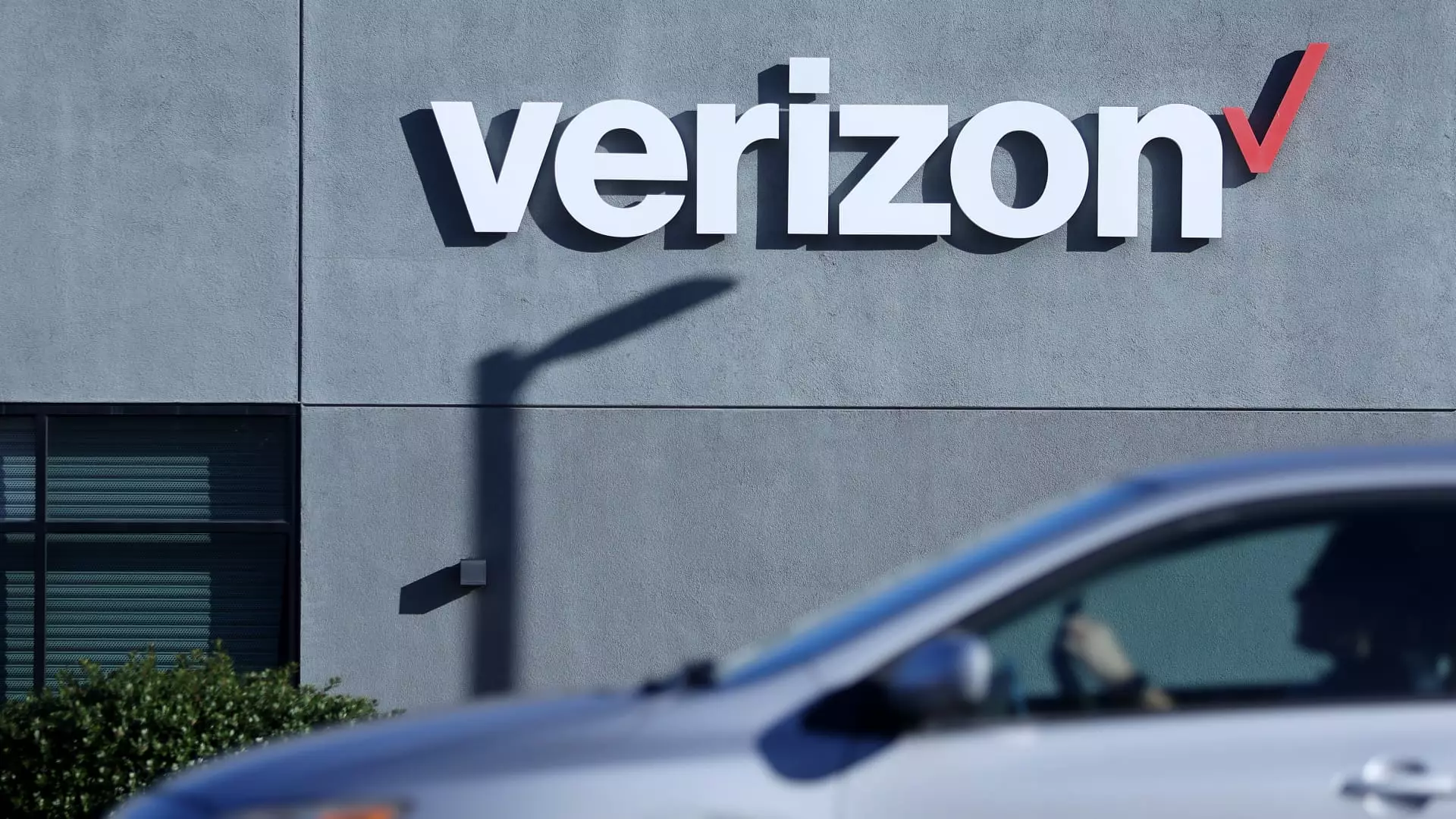In the current economic landscape, rife with trade disputes and geopolitical tensions, investors are skittish. Traditional asset classes are facing pressure, and many are looking to safeguard their portfolios. At this precarious juncture, dividend stocks emerge as an enticing solution, providing a reliable income stream amid tumultuous markets. The wisdom of top Wall Street analysts can be invaluable in this search, especially those whose recommendations stem from meticulous evaluations of company fundamentals. Here, we explore three notable dividend stocks presented by leading financial analysts, revealing why they could be integral to a well-rounded investment strategy.
Verizon Communications: A Toast to the Telecom Titan
Verizon Communications (VZ) has garnered attention as a prime candidate for those seeking robust dividends. With a declared quarterly dividend of $0.6775 per share—translating to an impressive yield of 6.3%—the stock is particularly appealing amidst a broadly positive outlook. Following a recent meeting, Citi’s analyst Michael Rollins articulated optimism about Verizon’s continual efforts to fortify its market position within broadband and converged services. This focus could place the company on a path to doubling its converged wireless subscriptions from 16% to 17% within three years.
While competitive pressures persist—especially within the wireless segment—Rollins remains resolute in his bullish sentiment. He’s banking on a resurgence of customer retention and reduced churn rates, positioning Verizon to reclaim its Business as Usual (BAU) metrics in the latter half of the year. Though forecasts predict a loss of 75,000 postpaid customers in quarter two, Rollins sees potential catalysts in upcoming results, suggesting that the third quarter may serve as a bellwether for future stock performance.
With a price target of $48, Rollins rates the stock a “buy.” Additionally, TipRanks’ AI model corroborates this sentiment, projecting a 14.3% upside for Verizon. Critics might dismiss these figures as overly optimistic, but understanding the underlying strategic movements could signal a turnaround that seasoned investors cannot afford to ignore.
Restaurant Brands International: Reassessing Fast Food Success
Next on the list is Restaurant Brands International (QSR), the parent company of household names like Burger King and Tim Hortons. Offering a quarterly dividend of 62 cents, or an annualized yield of approximately 3.7%, QSR presents another avenue for income-focused investors. Analyst David Palmer of Evercore expresses confidence in the company’s trajectory, projecting an 8% average organic adjusted operating income growth rate between 2024 and 2028.
Palmer’s assertion that the company can achieve profitability benchmarks despite lower-than-expected sales growth lends credence to the potential resilience of QSR in a competitive food service landscape. By focusing on cost management and employing a strategic approach to operational efficiency, the company positions itself favorably against competitors like Yum Brands or McDonald’s.
With a valuation that suggests significant upside potential, Palmer has reiterated a “buy” rating with a target price of $86, which implies a price-to-earnings multiple aligned with industry standards. In a sector often perceived as saturated, Restaurant Brands might just be the dark horse that can generate surprising returns for discerning investors.
EOG Resources: Uncovering Energy Stability
Shifting our focus to the energy sector, EOG Resources stands out as a compelling investment opportunity. The company recently announced its acquisition of Encino Acquisition Partners for $5.6 billion, signaling strategic growth in a sector often mired in volatility. Notably, EOG has raised its dividend by 5% to $1.02 per share, yielding a reliable 3.1% for its investors.
RBC Capital’s analyst, Scott Hanold, points out that EOG’s acquisition lore enhances its strategic footprint in the Utica Basin and supports ongoing commitments to shareholder returns. With an anticipated rise in production capabilities and a net debt to capital ratio of a mere 0.3x, EOG presents a compelling case for investment. The financial groundwork laid out by Hanold paints the picture of a stable company with plans for robust development in the coming years.
With a price target of $145 and a strong buy rating, Hanold’s bullish outlook coincides with the performance of TipRanks’ AI recommendations. Given the complexity of global energy markets, EOG’s resilience and commitment to shareholder returns, possibly driven by robust buyback initiatives, warrants close scrutiny.
The aggregate insights into these dividend stocks fortify their potential appeal at a time when many investors seek refuge from harsh market realities. As we witness the unfolding dynamics of financial markets shaped by geopolitical tensions, deploying capital into these carefully selected companies could prove to be not just strategic but also rewarding. For this reason, conservative investors should consider positioning themselves to capitalize on the financial health and dynamic growth potential that these dividend titans offer.

